Ground Elder: This Problem Plant Can Actually Be Useful If You Control Its Spread


Elizabeth is a Permaculture Garden Designer, Sustainability Consultant and Professional Writer, working as an advocate for positive change. She graduated from the University of St. Andrews with an MA in English and Philosophy and obtained a Diploma in Applied Permaculture Design from the Permaculture Association.
Reviewed By PETER LICKORISH

Peter is a Horticulture Lecturer and self-employed Horticulturist, with a passion for diverse areas of the industry - from garden design to the science behind plant growth and propagation. He has completed the Royal Horticultural Society’s Master of Horticulture (MHort) Award and lectures on RHS courses at Bedford College.
Ground elder is a problem that could turn into an opportunity.
This well-known weed is hard to eradicate, but you should ask yourself if you really need to get rid of it completely…
It is often considered to be one of the most problematic garden weeds, as it is very difficult to get rid of.
However, as we will explain in this guide, while we may not always want it in certain spots and will likely want to control it carefully, it can be a very useful plant to have around.
What Is Ground Elder?
Ground elder is a flowering perennial in the Apiaceae (carrot) plant family called Aegopodium podagraria.1Aegopodium podagraria L. (n.d.). Kew Botanic Gardens. Retrieved May 24, 2023, from https://powo.science.kew.org/taxon/urn:lsid:ipni.org:names:5849-2
It is also known by a number of other names, such as ‘Herb Gerard’, ‘Goutweed’ and ‘Bishop’s Weed’.

The name ground elder does not come from any familial relationship to the elder plant (Sambucus), but rather from the superficial similarities between the foliage and flowers of these two plants.
The plant is native to mainland Europe and parts of Asia and is believed to have been introduced to the UK from the continent in the Roman era or perhaps by monks during the middle ages.2Ground-elder. (n.d.). Gloucestershire Wildlife Trust. Retrieved March 27, 2023, from https://www.gloucestershirewildlifetrust.co.uk/wildlife-explorer/wildflowers/ground-elder
Why Is It A Problem?
Ground elder is largely considered a problem because of its propensity to spread rapidly and to outcompete other plants.
As a perennial plant, it will not die over winter and will come back year after year.
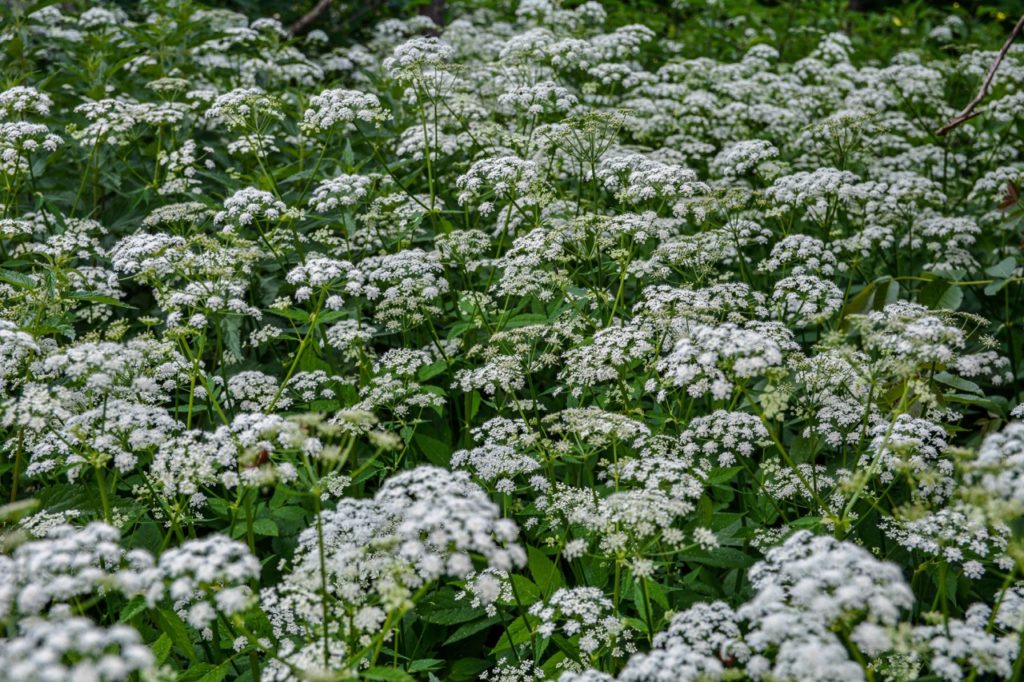
Ground elder can spread very rapidly by means of rhizomes below the soil, which spread out for long distances and delve deeply below the soil.
When cut, these rhizomes can grow into new plants from even the tiniest fragment.
The plant can also spread by means of seeds if the plants are allowed to flower.
How Did Ground Elder Get Into Your Garden?
Though ground elder can spread by seed, it is most commonly introduced to gardens accidentally by rhizomes which spread under fence lines, hedges or because tiny portions of the plant were imported in composts or manures.
How To Identify It
Ground elder is usually first spotted in spring when young shoots with furled leaves burst up through the soil and open out.
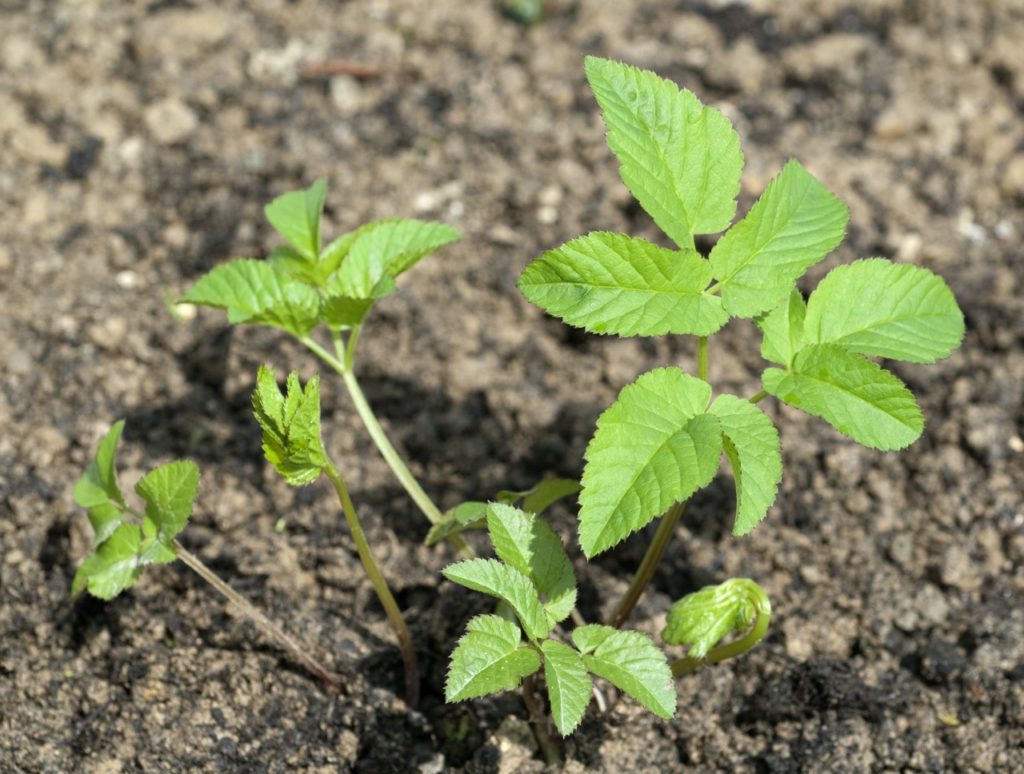
These leaves look like the leaves of an elder tree and, if you try to pull them up, you will find it is connected to a long white rhizome system.
In late spring and summer, tall stalks will appear, which support flat umbels of white flowers which look a little like elderflowers.
Removing Ground Elder
When gardeners are faced with beds taken over by this weed, the first instinct will usually be to remove and kill it altogether.

However, eradicating this plant entirely can be challenging and may not always be beneficial.
Instead, it can be beneficial to consider the uses of this plant and to control its further spread using organic methods.
1) Organic Methods
I have ground elder in my forest garden and around the edges of other parts of my property, as it was here when we moved in.
Rather than seeing it as a problem, I view it as a useful plant, as this is one of the edible weeds which I value on my property.
As they first unfurl, the young leaves from the soil make a great stir fry in spring and our chickens also eat them.
Both our own harvesting and the chickens foraging helps to prevent this plant from spreading too excessively, but where it does grow, I mostly find it a useful ground cover plant.
On occasion, the ground elder will find its way to the edges of a cultivated area where I would prefer it not to spread.
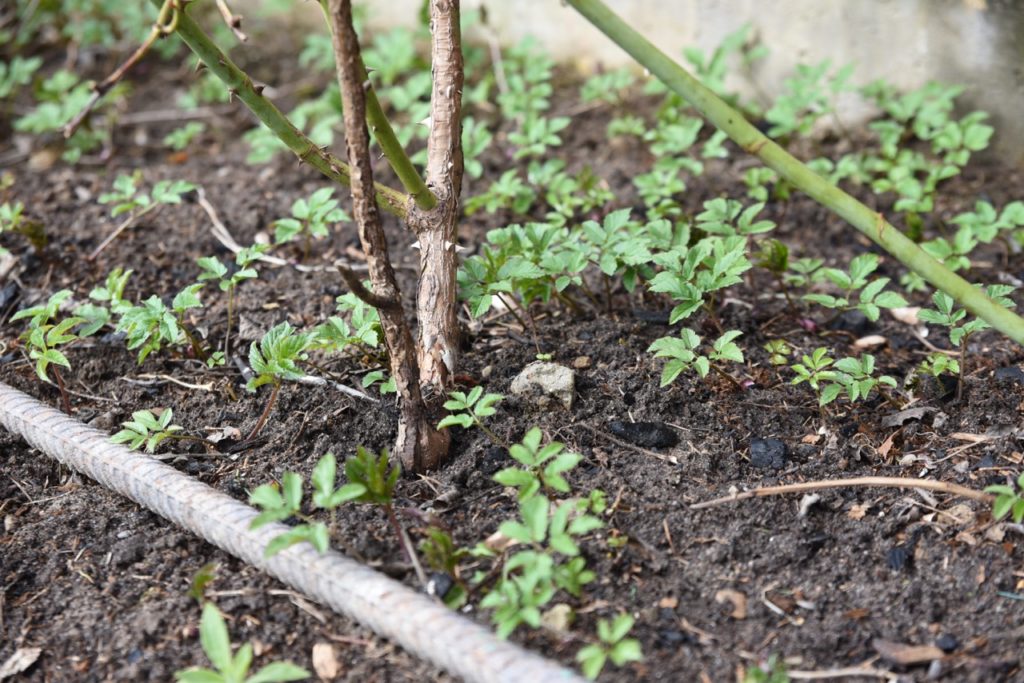
When the shoots emerge, I carefully trace back and remove the rhizome and plant from the soil.
Manual removal can work for small spaces, but you do have to be careful and make sure you remove all the rhizome since, as mentioned above, the plant can regrow from even the smallest piece.
To eradicate ground elder from a larger growing area, you will need to remove and temporarily rehouse any other plants that you wish to keep, then carefully pull up the ground elder, trying not to break the rhizomes.
“Wash the roots of any plants you have lifted and carefully untangle any rhizomes growing through them,” explains Peter Lickorish, a Horticultural Consultant.
Afterwards, sift through the soil judiciously to make sure it does not contain any more pieces, before replanting your chosen plants.
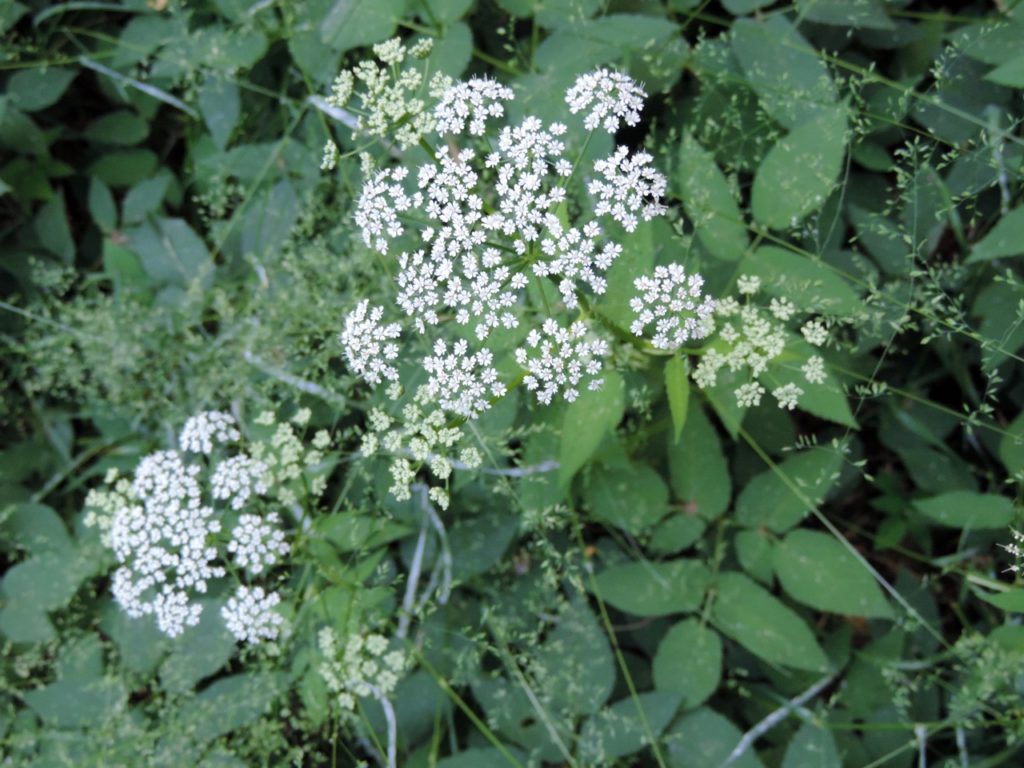
Some people will use black plastic sheeting to cover the soil, though I would not recommend this method, as the soil below will be degraded by this and soil life will be impacted.
In any case, the black plastic would have to be in place for several years to be effective.
In either case, if there is ground elder on an adjacent property, it will come back.
You will need to sink a barrier that descends to at least 50cm below the soil to prevent this, perhaps even more.
So, the best option is usually to tolerate the presence of ground elder and even learn to value its presence.
2) Growing Plants To Smother It
Ground elder creeping in around the edges of a garden can be less problematic if you simply embrace its presence and restrict its thuggish growth by growing other plants which can compete with it and deduce its preponderance.
Many woody shrubs or trees, which can cope with the same conditions of shade, will be perfectly happy growing amid ground elder and, through the competition and increased shade, will somewhat restrict its growth.
Planting vigorous ground cover plants can also help in outcompeting ground elder and making sure it does not take over entirely.
Some plants to try in an area where ground elder is creeping in are Acanthus mollis, hardy cranesbills, Ajuga and – in larger spaces – very vigorous ground cover shrubs like Rubus tricolor and other ground cover raspberries.
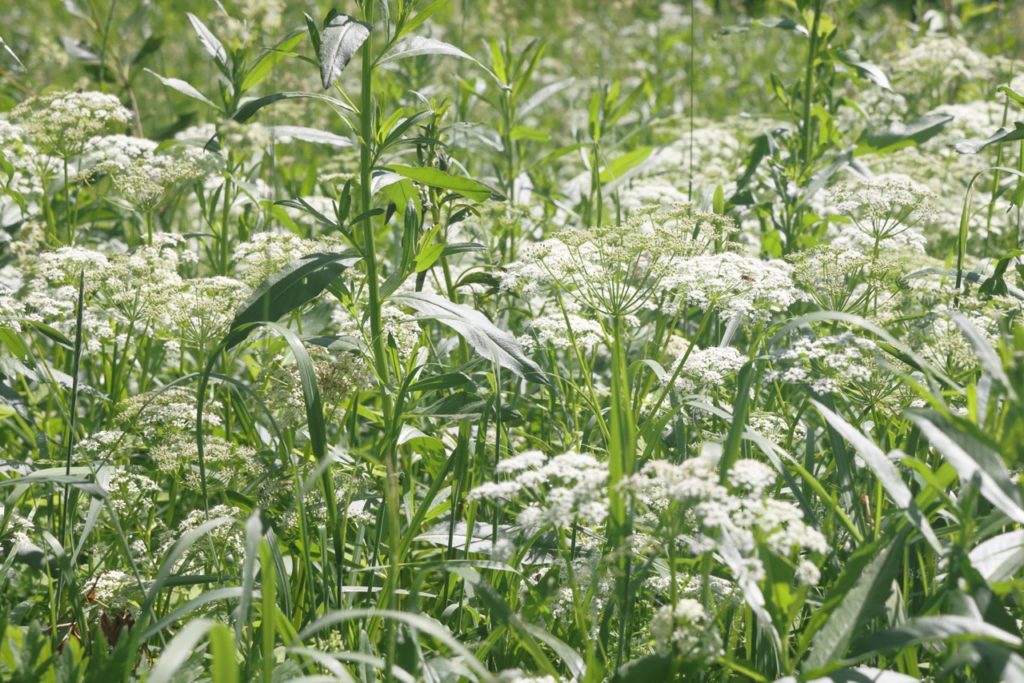
Mint is another good ground cover for shade which can happily co-exist with ground elder, and alpine strawberries can be another good choice.
Ground elder will likely still emerge between other plants, but the overall effect can be pleasing and great for wildlife.
As well as enjoying an edible yield in spring, the white flowers can also be very visually pleasing in a shady spot.
In a lawn or grassland, ground elder will gradually be reduced by mowing.
3) Chemical Methods
Chemical weedkillers are rarely effective in eradicating ground elder entirely and, of course, bring huge environmental and health concerns.
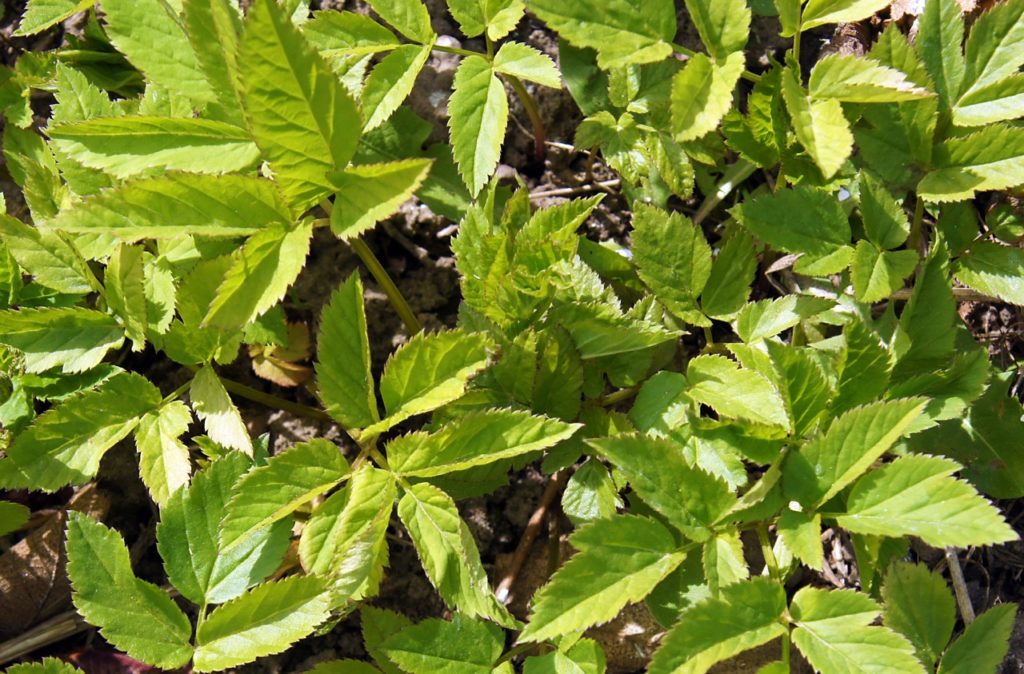
Keep your garden organic and learn to live with weeds, and your garden will be much healthier and will continue to be beautiful and productive over the years to come.
How To Dispose Of Ground Elder Safely
When pulling the ground elder stems, leaves and rhizomes from the ground, remember that this material should not be added to a composting system.
Instead, place everything into a bucket of water, along with other weeds, to make a liquid plant feed.
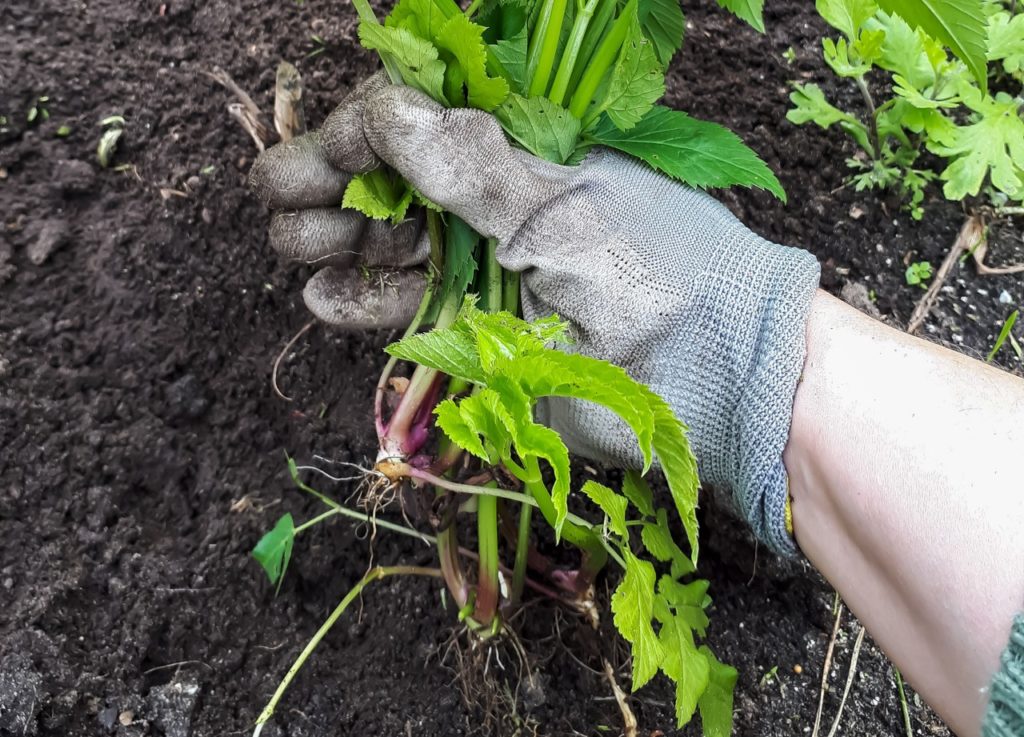
Once they have rotted down in the water, you can safely add the strained goop to your composting system and use the liquid as a multi-purpose feed.
You can also place the material somewhere to dry out and then burn it along with woody material.
The wood ash can also be used in moderation in your garden.
References
- 1Aegopodium podagraria L. (n.d.). Kew Botanic Gardens. Retrieved May 24, 2023, from https://powo.science.kew.org/taxon/urn:lsid:ipni.org:names:5849-2
- 2Ground-elder. (n.d.). Gloucestershire Wildlife Trust. Retrieved March 27, 2023, from https://www.gloucestershirewildlifetrust.co.uk/wildlife-explorer/wildflowers/ground-elder
